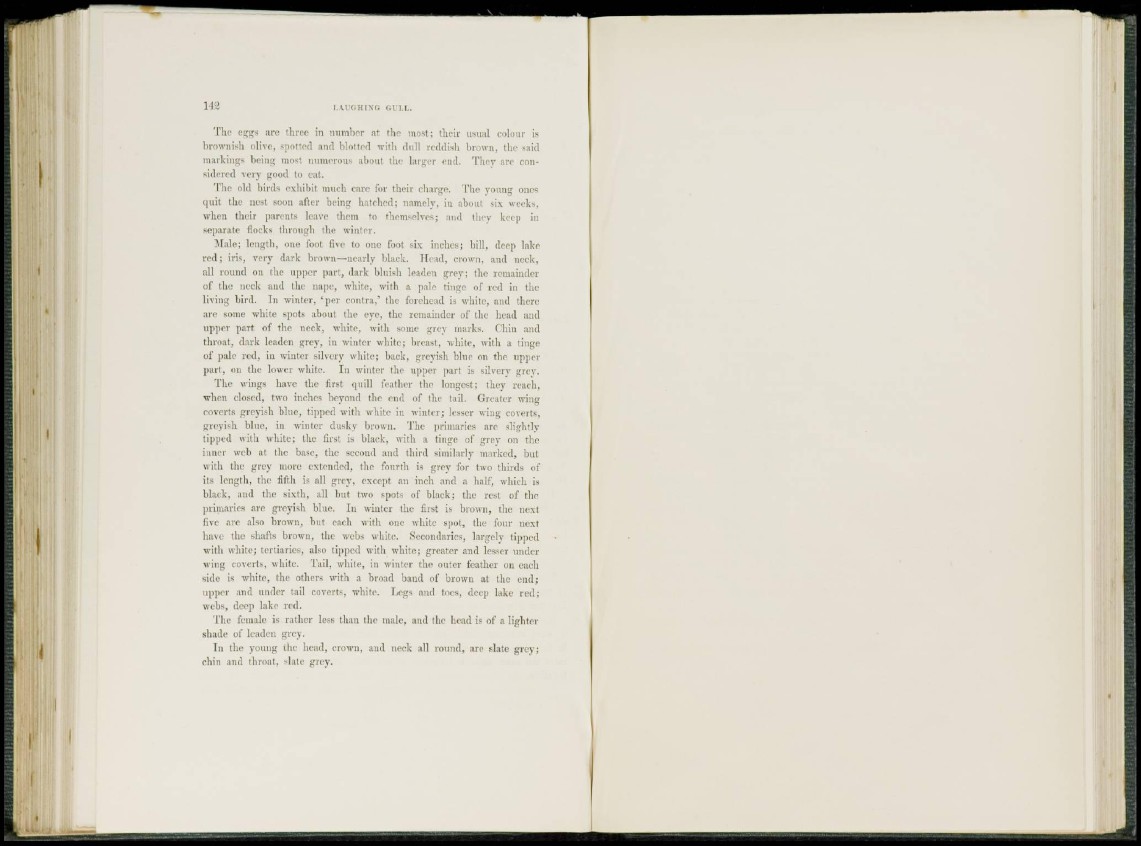
The eggs are three in number at the most; their usual colour is
brownish olive, spotted and blotted with dull reddish brown, the said
markings being most numerous about the larger end. Thev are considered
very good to cat.
The old birds exhibit much care for their charge. The young ones
quit the nest soon after being hatched; namely, in about si\ weeks,
when their parents leave them to themselves; and thev keep in
separate flocks through the winter.
Male; length, one foot five to one foot six inches; bill, deep lake
r e d ; iris, very dark brown—nearly black. Head, crown, and neck,
all round on the upper part, dark bluish leaden grey; the remainder
of the neck and the nape, white, with a pale tinge of red in the
living bird. In winter, 'per contra,' the forehead is white, and there
are some white spots about the eye, the remainder of the head and
upper part of the neck, white, with some grev marks. Chin and
throat, dark leaden grey, in winter white; breast, white, with a tinge
of pale red, in winter silvery white; back, greyish blue on the upper
part, on the lower white. In winter the upper part is silverv grev.
The wings have the first quill feather the longest; they reach,
when closed, two inches beyond the end of the tail. Greater wing
coverts greyish blue, tipped with white in winter; lesser wing coverts,
greyish blue, in winter dusky brown. The primaries are slightly
tipped with white; the first is black, with a tinge of grey on the
inner web at the base, the second and third similarly marked, but
with the grey more extended, the fourth is grey for two thirds of
its length, the fifth is all grey, except an inch and a half, which is
black, and the si\ih, all but two spots id' black; the rest of the
primaries are greyish blue. In winter the first is brown, the next
five are also brown, hut each with one wdiite spot, the four next
have the shafts brown, the webs wdiitc. Secondaries, largely tipped
with white; tertiaries, also tipped with white; greater and lesser under
wing coverts, white. Tail, white, in winter the outer feather on each
side is white, the others with a broad baud of brown at (he end;
upper and under tail coverts, white. Tegs and toes, deep lake red;
webs, deep lake red.
The female is rather less than the male, and the head is of a lighter
shade of leaden grey.
In the young ihe head, crown, and neck all round, arc slate grev;
chin and throat, slate grey.